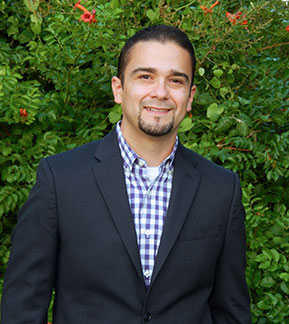
Felipe Hinojosa received a 2010 First Book Grant for Minority Scholars for his project Los Aleluyas: Faith, Activism, and Identity Among Latino/a Mennonites. Felipe shares about his latest book Latino Mennonites: Civil Rights, Faith & Evangelical Culture (Johns Hopkins University Press, 2014).
LI: Tell us about yourself and your current work.
FH: I was born and raised along the Texas/Mexico border in the town of Brownsville, Texas. I’m a preacher’s kid; I have five fabulous sisters and one brother, and I love hangin’ out with them all and eating great food in South Texas. Currently I live in College Station, Texas where I am an Assistant Professor of History at Texas A&M University. My research and teaching interests include Chicana/o and Latina/o studies, comparative race and ethnicity, gender, social movements, and religion. Most importantly, I am a father, husband, runner, basketball player, and an avid football fan.
LI: What core question/concern guided your research project?
FH: I was fundamentally interested in tracing the influence of the Chicano, Puerto Rican, and Black freedom struggles of the 1960s and 1970s on the interethnic coalition forged between Latinos and African Americans in the Mennonite Church. My book moves beyond a single ethnic group approach and takes a comparative and relational approach to race/ethnicity that explores the limits and possibilities of interethnic coalitions forged between black and brown religious communities. I trace this movement from the missionary period in the years during World War II to the late 1960s and 1970s; every step of the way I examine how gender, race, religious identity, and power helped shape interethnic politics in the church.
LI: What would you like us to know about your book Latino Mennonites: Civil Rights, Faith & Evangelical Culture?
FH: I think the first thing that I would want people to know is that while this is a book about Latinos and African Americans in the Mennonite Church, the book speaks to larger issues that affected all Latina/o religious communities during the civil rights movements. I think one of the central themes that emerges from the book is the idea that Latina/o evangelicals were not operating in isolation or distant from civil rights politics, but instead fundamentally engaged in the important questions that were affecting all religious communities during the civil rights era. While much good work has been done by Latina/o religious scholars on civic engagement and denominational reform, my book takes it one step further to examine black and brown coalition politics and the important questions that helped transform this relatively small, rural, and Midwestern denomination. The book not only situates the Midwest as an important region for exploring civil rights struggles, but also reveals the diverse and eclectic religious affiliations of Latina/os–in this case, Latino Mennonites.